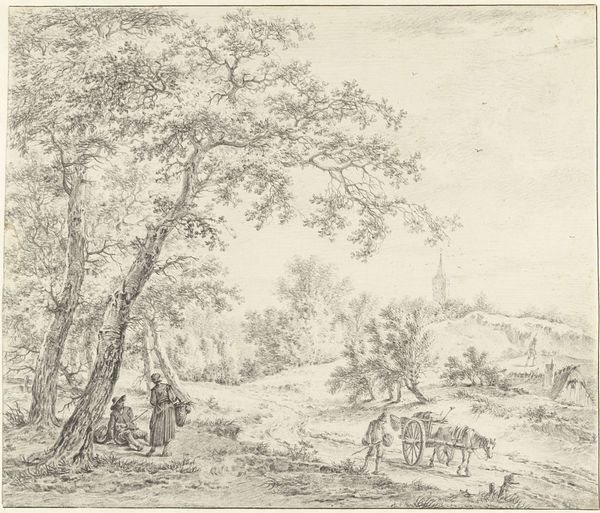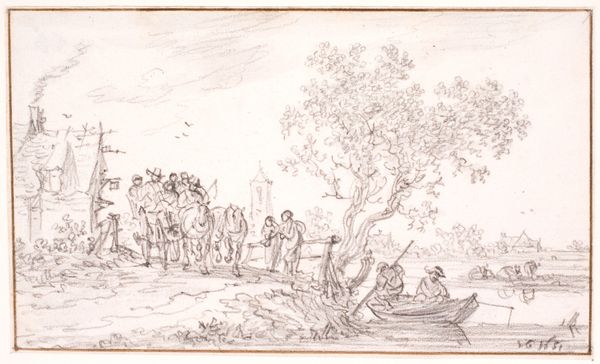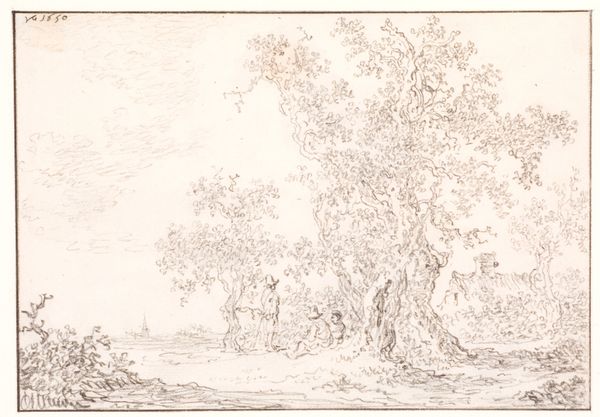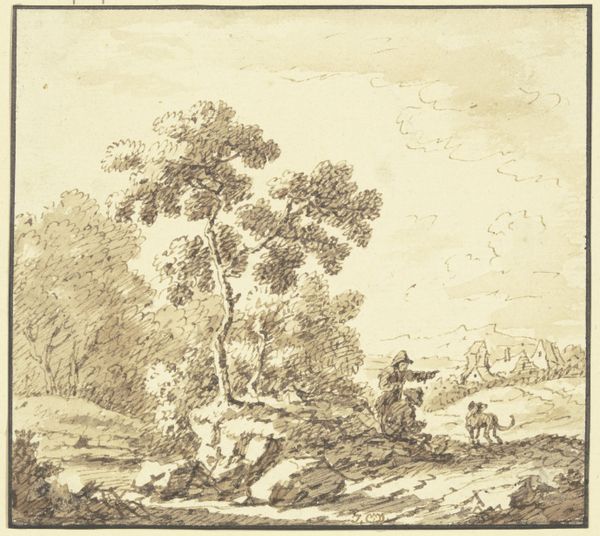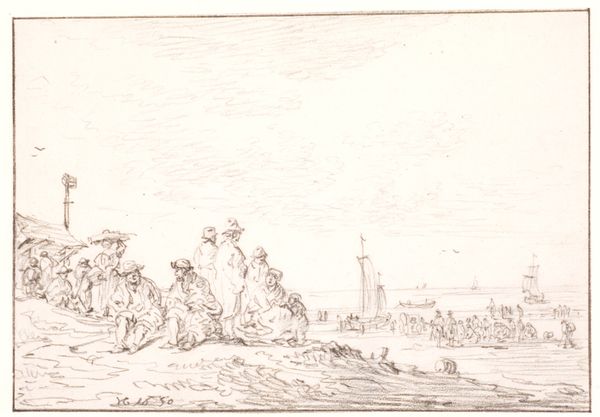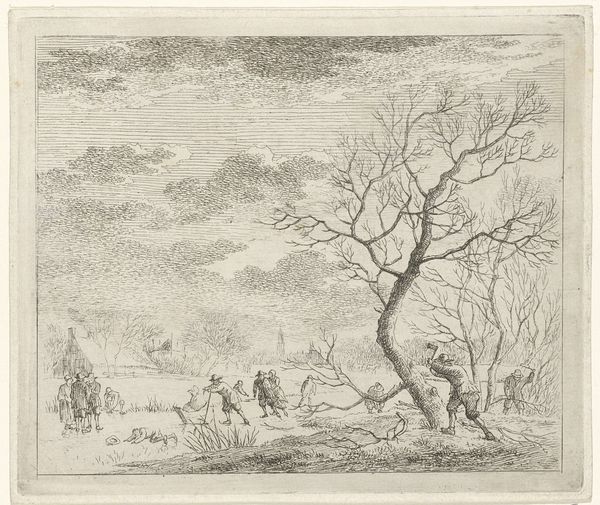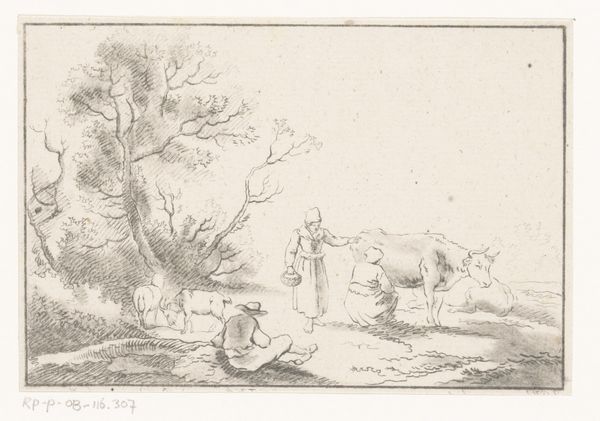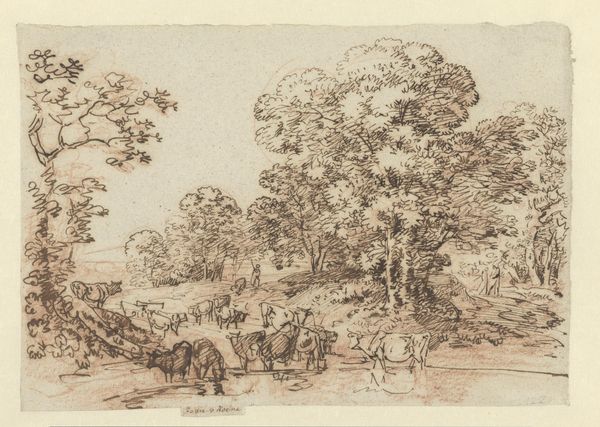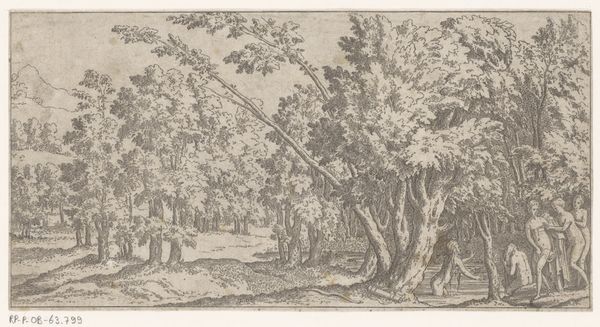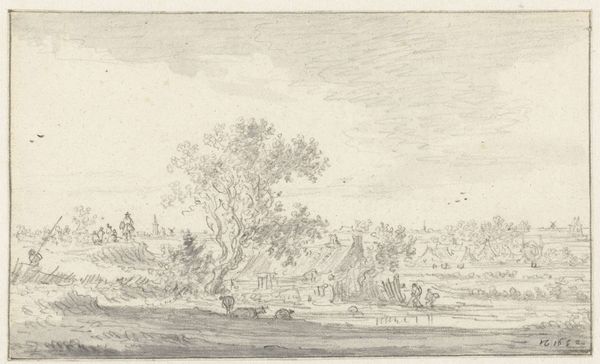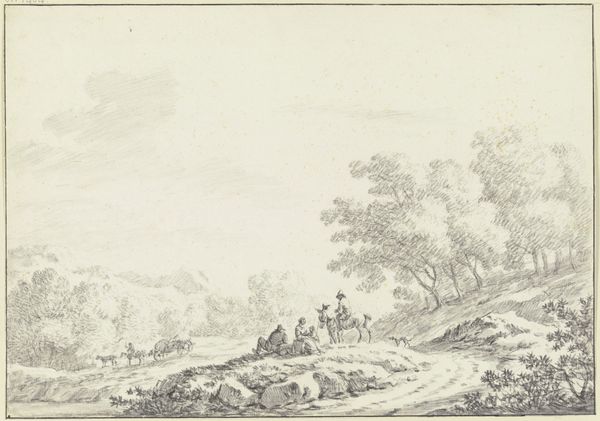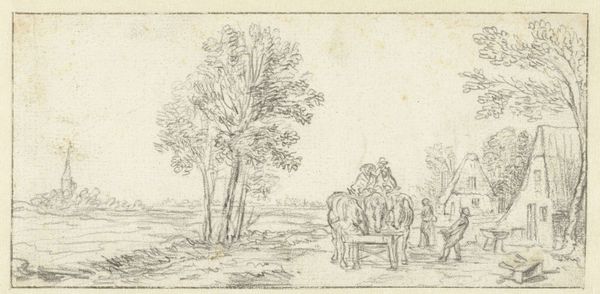
drawing, ink
#
drawing
#
ink drawing
#
dutch-golden-age
#
landscape
#
ink
Dimensions: 121 mm (height) x 175 mm (width) (bladmaal)
Editor: So, here we have Jan van Goyen's "Landscape with a Two-Horse Carriage and a Large Old Oak," created around 1650. It’s an ink drawing, and I’m struck by how the detail in the tree contrasts with the almost sketched-in quality of the figures. What are your thoughts when you see it? Curator: My eye immediately goes to the method of production. The use of ink, a relatively accessible material even in the 17th century, suggests this might be less about high art and more about a record of daily life, focusing on the materials at hand. Think about the societal value placed on oak trees at this time – used for ship building and homes, oak was essential for Dutch expansion. Editor: That’s interesting! I hadn’t considered the oak tree in terms of its economic importance. Does that change how we see the people traveling by carriage? Curator: Exactly! The carriage becomes linked to this tree by more than its form. It prompts us to think about their movement across the land and how materials – be it ink, wood, or the labor of the horses – were mobilized in that moment. Are the materials readily accessible for everyone? Consider also the rise of landscape art within the context of Dutch Golden Age trade and wealth. Is it a detached artistic scene, or something more pointed? Editor: It definitely reframes my view. It’s less a picturesque landscape and more a snapshot of resource use and the social hierarchy supported by those resources. I like that it acknowledges that craft and daily experience has validity that parallels formal portraiture or idealized scenes. Curator: Indeed. The artist chooses to represent labor as intertwined with their economic ecosystem of materiality and human social relations in the 17th century. Looking at it in this way highlights the labor of humans and the means and mechanisms available at the time to access such a material. It feels particularly important when reflecting on these scenes through today's lense.
Comments
No comments
Be the first to comment and join the conversation on the ultimate creative platform.

